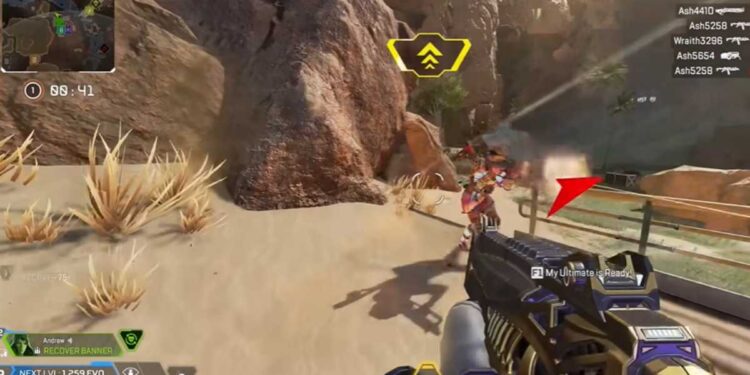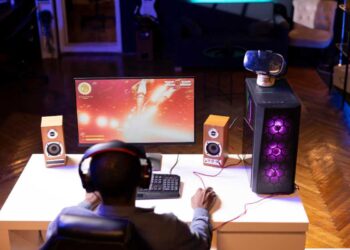The Apex Legends meta has undergone a massive shift in Season 26, transforming how players approach fights, rotations, and endgame scenarios. The once-dominant movement legends have been countered by significant buffs to area denial specialists, creating a tactical battlefield that rewards strategic thinking over pure mechanical skill.
I’ve spent hundreds of hours analyzing how top players and streamers have adapted to these changes, and I’m breaking down the seven most effective strategies that separate predator-level players from the rest of the pack in the current meta.
1. Master the New Legend Dynamics
Season 26’s balance changes have completely reshuffled the legend tier list. While Ash maintains her high pick rate due to her unchanged stats, Caustic and Bangalore have emerged as the true meta definers thanks to significant buffs that counter the movement-heavy compositions we saw dominating in previous seasons.
Caustic’s reworked gas now suppresses most enemy mobility abilities, making his area denial substantially more powerful. When paired with Bangalore’s improved tactical smoke, which gained increased density and duration, you can effectively shut down entire sections of the map during crucial endgame scenarios.
The most successful squad compositions now feature this deadly combination, with an Ash as the third pick providing crucial rotational utility through her portal. This setup gives teams unparalleled zone control while maintaining the ability to reposition when necessary.
2. Adapt Your Rotation Strategy
The meta has shifted away from early hot-dropping for immediate fights. With increased ranked entry costs and lower elimination rewards, surviving to endgame has become far more valuable than racking up early kills. This has fundamentally changed how you should approach rotations.
Smart teams now prioritize mid-map landings with good access to likely final circles. Instead of rushing into contested POIs, focus on securing a defensible position within the second or third zone, then using your utility to fortify it against pushes.
The best players now rotate early, taking power positions with strong natural cover that can be enhanced by Caustic traps or Bangalore smoke. This strategy minimizes your exposure during rotation while maximizing your chances of controlling the final circles.
Pro Tip: Map Knowledge is King
Study the patterns of final zone pulls on each map. On Storm Point, for example, Barometer and Command Center see a disproportionate number of final circles. Position your team accordingly to minimize late-game rotation risks.
3. Optimize Your Weapon Loadouts
The current weapon meta favors versatile options that perform well in the slower, more tactical endgames. The R-99 remains dominant for its raw DPS in close quarters, while the Flatline and Nemesis excel as mid-range options with enough stopping power to punish out-of-position enemies.
Most pro players now prioritize these key loadout combinations:
- R-99 + Flatline: Covers all engagement distances with maximum damage potential
- Peacekeeper + Hemlock: Burst damage for gas/smoke fights with ranged pressure capability
Digital threat sights have become significantly more valuable with the prevalence of smoke and gas in endgame scenarios. Prioritize finding these attachments when running shotguns or SMGs to maintain visibility advantage during crucial fights.
4. Deploy Advanced Zone Control Tactics
With the increased importance of positioning, controlling key areas has become essential to consistent wins. The most effective strategy involves creating layered defenses using both legends’ abilities and environmental cover.
Caustic players should place gas traps in a staggered pattern that forces enemies to either trigger multiple traps or funnel through predictable chokepoints. Bangalore’s smoke should be saved until your position is compromised, creating visual cover for resets or unexpected counter-aggression.
High-skill players have started using gas traps on deathboxes to punish hungry third parties, creating a psychological deterrent against pushes. This tactic works especially well in ranked play, where teams are more cautious about engaging without clear advantages.
5. Master Psychological Warfare
The slower pace of Season 26 has made mind games increasingly important. Top players now regularly use deception and baiting tactics to force opponents into unfavorable engagements.
Bangalore’s smoke has created new opportunities for misdirection. By smoking one area but rotating through another, you can cause enemies to waste time and resources holding angles against phantom threats. Similarly, starting a revival sound but canceling it can bait overeager teams into pushing disadvantageous positions.
In final circles, controlling when and where fights occur has become crucial. By forcing other squads to engage each other first, you can secure third-party opportunities that minimize your own risk while maximizing elimination potential.
6. Exploit Technical Advantages
While strategy has become more important, technical performance still provides significant advantages in close fights. Optimizing your setup can give you crucial milliseconds of advantage in gunfights.
Audio awareness has become particularly vital in the current meta. High-quality headsets with spatial audio capabilities allow you to track enemy movements through Bangalore’s smoke or around Caustic’s gas traps. This information advantage often determines who gets the first shots in crucial engagements.
Visual clarity settings have also gained importance with the prevalence of visual obstructions. Many pro players now use specific colorblind modes and brightness settings to improve visibility through smoke and gas effects.
Performance Essentials
Ensure you’re getting maximum frames-per-second and minimal input delay by optimizing your hardware settings. While https://battlelog.co/apex-legends-hacks-cheats-aimbot-esp-radar/ exist in the competitive scene, legitimately optimizing your setup provides substantial advantages without risking your account.
7. Develop Clear Team Communications
The tactical nature of Season 26 has made effective communication more important than ever. The best squads now use phase-specific communication protocols that evolve as the match progresses.
Early and mid-game comms should focus on rotation planning and threat identification with minimal chatter. As circles close and teams converge, communication should shift to precise callouts about enemy positions, ability usage, and damage dealt.
In final circles, successful teams use extremely brief callouts focused only on critical information: “Cracked Caustic behind blue,” “Ash portaling left,” or “Healing, cover 5 seconds.” This clarity eliminates confusion during high-pressure moments.
Develop standardized callouts for each map that your whole team understands. Consistent terminology prevents misunderstandings during critical moments and helps coordinate focus fire more effectively.
The Bottom Line
Success in Season 26 requires adapting to a significantly different playstyle than previous seasons. The movement-dominated meta has given way to tactical positioning and zone control, with area denial abilities now determining the outcome of most endgame scenarios.
By mastering these seven strategies, you’ll be well-positioned to climb through ranked lobbies or dominate pub matches despite the significant meta shifts. Remember that adaptation is key – what works today might change with the next balance update, so stay flexible and keep analyzing how top players approach the game.

























